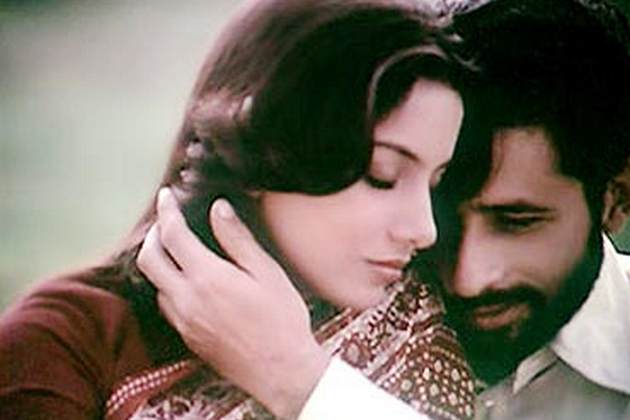It spoke of the visually challenged without any of the melancholy that commercial Hindi films approach all disability with. Instead there was music, humour, love and empathy and little sightless children beating their plates in the hostel canteen to the tune of, “Hai ye kaisi uljhan..phir se aaloo baingan!”
The film had Naseeruddin Shah playing Aniruddh, a visually impaired principal of what was then known as a ‘Blind School.’ And Shabana Azmi as Kavita, a bonsai loving widow who sings to fill up the silence in her life. The film was supposedly based on a real life love story and Shah in his biography, And Then One Day, recalls how emotionally nourishing his journey with Sparsh was after having disembarked from some chafing Bollywood vehicles. For one, he said, Sai’s wonderfully intuitive script did everything for him and the rest was done by the inmates of the institution the film was shot in, who just perceived the world differently but were as ‘normal’ as anyone.
And then while she fumes in silence, he cajoles her to drink her coffee and smiles endearingly, unseeingly and yet with uncanny insight into her temper. The bonding grows and there are some beautiful scenes where the two share a meal at her home after he has shelled peas for her and has touched the garland on a photograph to know where her vulnerability stems from. And yet he ruins a perfectly promising Chinese meal at a five star restaurant when she refuses to dance with him just because this was a memory she made with her husband on the very same dance floor. He is hurt and angry when he spills a glass of water in this fancy space and when the waiter presents the bill to Kavita rather than to him, in a way mocking his disability and his sense of male selfhood. He is cynical and quick-tempered. Always disapproving of the food she brings to the office and of the gestures of warmth because he hates dependence.
And yet, love grows unbidden in this cacti infested ground and takes over two barren lives. A lyrical moment comes when the couple is at an Amjad Ali Khan concert and Kavita imagines a silent duet of intimacy set to the sarod. And also when she chooses a saree for her engagement ceremony not because it looks beautiful but because it feels tactile and soft.
And when he wants to know if she is beautiful, she says, “So people say…am fair, have lush hair, brown eyes..in our country..this is enough to be called beautiful.”
But inevitably, his complexes and her fears catch up and almost derail the relationship till both learn to “see” each other and themselves without any baggage.As a common friend (the absolutely self-assured Sudha Chopra, once the cameo queen of alternate cinema) points out near the climax that a man is truly blind only when he refuses to see beyond himself. And that real disability is the emotional incapacity to love.There is also a lovely little cameo by Mohan Gokhale who plays Aniruddh’s assistant and allows him to interfere in his love life. Om Puri, possibly still struggling to get his first big break, makes a brief appearance as Aniruddh’s sightless colleague who loses his wife to cancer. The real stars of Sparsh are the young children who after the shoot asked Naseer, “Will we be able to see the film?”
The film won a slew of awards but its real achievement was to address disability as an emotional issue rather than a physical one and to eschew what Naseer says in his book, is the,”Main bechara andha” approach. It was also Sai’s way of showing the insensitive world of commercial cinema how to treat the sightless with dignity and allow them a story of fulfilment rather then unrelenting misery.
 with The New Indian Express Reema Moudgil works for The New Indian Express, Bangalore, is the author of Perfect Eight, the editor of Chicken Soup for the Soul-Indian Women, an artist, a former RJ and a mother. She dreams of a cottage of her own that opens to a garden and where she can write more books, paint, listen to music and just be.
with The New Indian Express Reema Moudgil works for The New Indian Express, Bangalore, is the author of Perfect Eight, the editor of Chicken Soup for the Soul-Indian Women, an artist, a former RJ and a mother. She dreams of a cottage of her own that opens to a garden and where she can write more books, paint, listen to music and just be.







Thankfully, someone still bothers to remember write about sensitive sensible movies like Sparsh..
Thankyou UNBOXED WRITERS..and Reema..
beautifully written. it wasa beautiful film as well